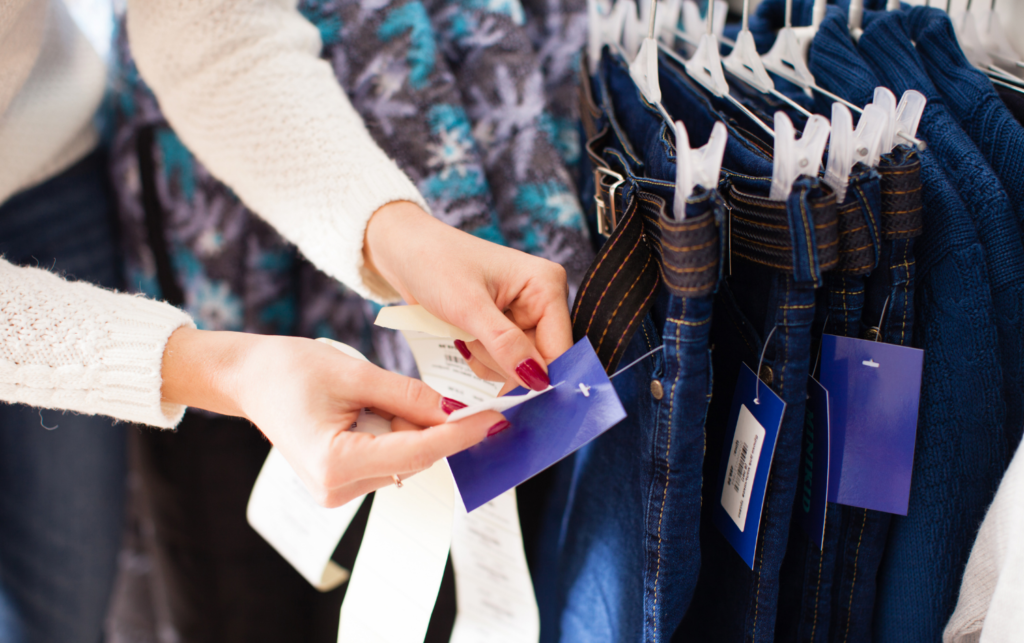Sustainability trends for home textiles in 2021
by ajones | Mar 17, 2021 | Blog, Textile, Sustainability | No Comments

With much of the world staying home more than ever before, sales for home textiles increased more than apparel in 2020 (Young, 2020). 2021 trends indicate the home textiles industry will experience a growth in consumer spending due to the demand for comfort amongst consumers worldwide. Sales are dependent on brands and retailers meeting the consumer desire for sustainable products. Product developers must respond to consumer preferences in order to achieve industry strides in sustainability. In fact, a survey by Accenture found that 72% of consumers are purchasing more environmentally friendly products than five years ago, and 83% of consumers believe it is important for brands to design products that are meant to be reused or recycled (Accenture, 2019).
Increased demand for natural fibers
Due to the consumer demand for sustainable products, it is likely that synthetic fibers, like polyester, nylon, and spandex, will lose ground to textiles which utilize natural fibers. Overall this trend is a result of consumers becoming more educated about the environmental impacts of producing man-made fibers. With this in mind, consumers are more aware of the fact that synthetic fibers are not biodegradable, and their petroleum-based production contributes to greenhouse gas emissions. Additionally, the growing concern of leached microplastics from synthetic textiles during the wash cycle contributes to the growing microfiber pollution in the oceans.
Increased demand for recycled fibers
Recycled materials are perhaps one of the fastest growing 2021 trends in the home textiles industry. From 2018 to 2019 there was a 251% increase in the number of Global Recycled Standard (GRS) sites certified in one year (Textile Exchange, 2020). According to Home Textiles Today, consumers are paying more attention to what their products are made of and how products are sourced. This correlates with a growing demand for recycled content in fabrics, which follows the idea that the sustainability of a product is more than how a product is made–it’s also what the product is made of (Wear, 2021).
The push for performance
Today’s consumer views a product purchase as an investment. It is important to provide products that are durable and easy to maintain given the amount of washes required for the end use product. The push for performance is apparent more than ever. Textile technologies such as moisture wicking, soil/stain release, cooling, and odor controlling technologies provide reassurance to consumers that products will perform at all hours of the day. Furthermore, it provides added flexibility to consumers looking to reduce the amount of time spent laundering each week.
Purchase drivers for home textiles
Quality, durability, and comfort are primary influences for consumers when purchasing home textile products. Specifically, consumers rank material type as their most important consideration, above price, design, brand, and function (Friedman, 2020). Studies also show plant-based fibers, such as cotton, jute, coir, flax, and hemp, are becoming more popular for home textile products due to the fibers’ natural texture (Textile Exchange, 2020, p. 20). In addition to this, studies reinforce texture will influence consumer purchases for products in the home, particularly for upholstery fabrics. Textiles which look and feel comfortable will undoubtedly support consumer lifestyles spending more time at home.
2021 trends reinforce sustainability in the future
In conclusion, home textiles trends are inevitably moving towards sustainability. Even the rise in popularity of nature-inspired, earthy colors reflects the growing awareness of the environmental impact of textile production (Velasquez, 2020). The advancing developments for textile performance features offer consumers growing opportunities to extend the life of their products.
Consumers are learning and adapting their purchase decisions accordingly. Lenzing Group, which specializes in sustainably produced wood-based fibers, surveyed 9,000 respondents in nine countries on “Sustainable Raw Materials in Fashion and Home Textiles.” In summary, the survey found that most respondents were willing to pay an average of 40% more for products that reflect sustainability in their descriptions (Friedman, 2020).
Despite the global pandemic, the push for sustainability remains to be a pressing concern around the world. All in all, through innovation and consumer education, sustainability will remain a key focus for home textile products in the future.
References
Accenture. (2019, June 4). More than half of consumers would pay more for sustainable products designed to be reused or Recycled, Accenture survey finds. Accenture. https://newsroom.accenture.com/news/more-than-half-of-consumers-would-pay-more-for-sustainable-products-designed-to-be-reused-or-recycled-accenture-survey-finds.htm
Friedman, A. (2020, September 3). Sustainability Sound Off: What Consumers Really Think of Eco-Friendly Fashion. Sourcing Journal. https://sourcingjournal.com/topics/sustainability/lenzing-transparency-consumer-trust-fiber-sustainability-apparel-home-textiles-229267/
Helbing, T. (2020, September 22). Textile Trends Look to a More Sustainable Future. Houzz. https://www.houzz.com/magazine/textile-trends-look-to-a-more-sustainable-future-stsetivw-vs~140973367
Textile Exchange. (2020). Preferred Fiber & Materials Market Report 2020. https://textileexchange.org/wp-content/uploads/2020/06/Textile-Exchange_Preferred-Fiber-Material-Market-Report_2020.pdf
Velasquez, A. (2020). Nature-Inspired Colors In High Demand for Apparel and Home Textiles. Sourcing Journal. https://sourcingjournal.com/denim/denim-trends/nature-inspired-colors-apparel-home-textiles-in-demand-archroma-233683/
Wear, A. F. (2021, March 01). Performance, sustainability, texture continue to highlight fabric trends. Home Textiles Today. https://www.hometextilestoday.com/industry-news/performance-sustainability-texture-continue-to-highlight-fabric-trends/
Young, V. M. (2020). Supply-Chain Data Suggests Home Textiles Stealing Share From Apparel. Sourcing Journal. https://sourcingjournal.com/topics/sourcing/panjiva-apparel-imports-home-textiles-coronavirus-pandemic-237649/

2021 ProTecht Blog Recap
As we come to the end of another full year, we invite you to take a few minutes to review some of...

Textile Trends in 2022
As the fashion industry seeks to become more sustainable, many are working to develop new textiles...

Sustainability Certifications in the Textile Industry
Public awareness surrounding traceability and transparency has, of course, increased the demand for...

